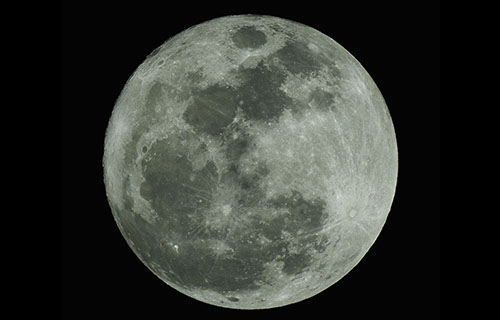Though data from orbiters have suggested presence of de apă ice, the exploration of lunar craters in the polar regions of moon has not been possible due to the absence of suitable technology to power lunar rovers in the perpetually dark, super cold areas having a temperature of –240°C. The project PHILIP (‘Powering rovers by High Intensity Laser Induction on Planete’) commissioned by European Spaţiu Agency is ready to develop prototypes that would provide laser power to these rovers in an effort to explore evidence of existence of de apă in these craters.
Lună nu se rotește pe axa sa când se învârte în jurul pământului, prin urmare, cealaltă parte a lunii nu este niciodată vizibilă de pe pământ, dar ambele părți primesc două săptămâni de lumină solară urmate de două săptămâni de noapte.
However, there are sunken areas in craters situated in the polar regions of moon that never receive sun-light because low angle of sunlight that leave the deep interiors of the craters in shadow forever. This perpetual darkness in the polar craters make them super cold in the range of –240°C corresponding roughly to about 30 Kelvin i.e. 30 degrees above absolute zero. The data received from the lunar orbiters of ESA, ISRO și NASA have shown that these permanently shadowed areas are rich in hydrogen, suggestive of presence of de apă (ice) in these craters. This information is of interest for science as well as a local source of ‘de apă and oxygen’ for future moon human habitation. Therefore, there is a need of a rover that could go down to such craters, drill and bring sample for testing to confirm presence of ice there. Given lunar rovers are usually solar powered, this has not been achieved so far because it has not been possible to ensure power supply to rovers while it explores some of these dark craters.
O considerație a fost de a avea rovere cu propulsie nucleară, dar s-a dovedit a fi nepotrivit pentru explorarea gheții.
Ținând cont de rapoartele privind utilizarea laserului pentru a alimenta dronele pentru a le menține în sus pentru o perioadă mai lungă de timp, proiectul PHILIP (‘Powering rovers by High Intensity Laser Induction on Planete’) was commissioned by European Spaţiu Agency to design a complete alimentat cu laser misiune de explorare.
The PHILIP project is completed now and the ESA is one step closer to powering lunar rovers with lasers to explore the super cold dark cratere lunare lângă poli.
ESA would now begin to develop prototypes for exploring the dark craters that would provide evidence for confirmation of the presence of de apă (ice) leading to realisation of human dream to inhabit this satellite.
***
Surse:
The European Space Agency 2020. Enabling & Support / Space Engineering & Technology. Rover alimentat cu laser pentru a explora umbrele întunecate ale Lunii. Postat pe 14 mai 2020. Disponibil online la http://www.esa.int/Enabling_Support/Space_Engineering_Technology/Laser-powered_rover_to_explore_Moon_s_dark_shadows Accesat pe 15 mai 2020.
***






































